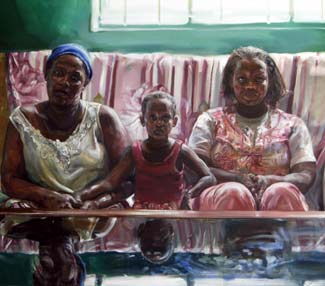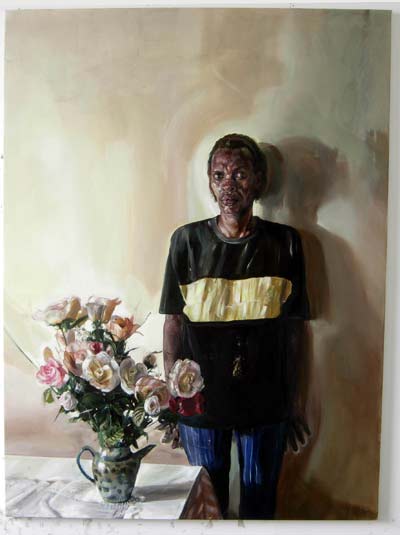by Andrea Smith

In a society that, in large measure, condones gender violence, the problem cannot be solved by locking up a few men. It is a problem that requires a political organizing solution, one that focuses on transforming society so that it no longer condones violence.
But this has not been the focus of mainstream organizations working on sexual and domestic violence, nor of organizations inside communities of color. Women of color in the U.S. have had to create their own pathways for addressing gender-based violence in a way that also acknowledges the historic violence against their communities. Their solutions, in turn, offer new ideas for transforming society.
Double Binds for Women of Color
Within the mainstream anti-violence movement in the United States, women of color who survive sexual or domestic abuse are often told that they must pit themselves against their communities, often portrayed stereotypically as violent, to begin the healing process. Communities of color, meanwhile, often advocate that women keep silent about the sexual and domestic violence in order to maintain a united front against racism.
| Ending violence requires societal transformation. |
Mainstream remedies for addressing sexual and domestic violence here in the United States have proven to be inadequate for addressing the problems of gender violence in general, but particularly for addressing violence against women of color.
The problem is not simply an issue of providing multicultural services to survivors of violence. Rather, the analysis and strategies around addressing gender violence have failed to address the manner in which gender violence is not simply a tool of patriarchal control, but also serves as a tool of racism, economic oppression and colonialism. That is, colonial relationships, as well as race and class relations are themselves gendered and sexualized.
The State, rather than being the solution to ending violence against women, must be seen as a primary perpetrator of violence, as can be seen in the history of sexual colonization of Native women, the sexual slavery of African American women and the sexual exploitation of immigrant women’s labor. Strategies designed to combat violence within communities (sexual/domestic violence) must be linked to strategies that combat violence directed against communities, including State violence (such as police brutality, prisons, militarism, racism, colonialism and economic exploitation).

As the anti-violence movement has attempted to become more inclusive, attempts at multicultural interventions against domestic violence have unwittingly strengthened white supremacy within the anti-violence movement. All too often, inclusivity has come to mean that the Adomestic violence model, which developed largely with the interests of white middle-class women in mind, should simply add a multicultural component to it. Anti-violence multicultural curricula are often the same as those produced by mainstream groups with some “cultural@ designs or references added to this pre-existing model.
Women of color are constantly called upon to provide domestic violence service providers “cultural sensitivity programs” where women of color are supposed to explain our cultures, sometimes in 30 minutes or less. Even with longer trainings (for example, 40 one-hour meetings), only one or two of those hours are devoted to “cultural diversity.”
Law ‘n’ Order Scheme Fails to Help
But endless hours of diversity training do not address the fact that the movement primarily utilizes strategies that strengthen State violence.
First, the movement works through a non-profit model that images survivors simply as clients who need services, rather than as potential organizers who can end violence on their own. This approach teaches survivors to adjust to violence in society rather than to transform it.
Second, the movement is funded largely through the criminal justice system so that the strategies focus on getting more police involvement, longer prison sentences, and so on – all strategies that strengthen the prison-industrial complex. Particularly since the passage of the Violence Against Women Act in 1994, anti-violence centers have been able to receive a considerable amount of funding from the State to the point where most agencies have become dependent on the government for their continued existence.
The Right has been very successful in using anti-violence rhetoric to mobilize support for a repressive anti-crime agenda that includes three strikes legislation and anti-drug bills. These anti-crime measures then make abused women more likely to find themselves in prison if they are coerced by partners to engage in illegal activity.
When men of color are disproportionately incarcerated because of these laws that have been passed in part through the co-optation of anti-violence rhetoric, the entire community, particularly women who are often the community caretakers, is negatively impacted.
| Criminalization has not led to a decrease in violence against women. |
The Violence Against Women Act was attached to the repressive Violent Crime Control and Law Enforcement Act, which increased the use of the death penalty, added over fifty federal offenses – many of which criminalized youth of color, eliminated Pell Grants for prisoners, and expanded the prison industrial complex by 9.7 billion dollars. But it was heralded by anti-violence advocates as “feminist” legislation.
Criminalization has not actually led to a decrease in violence against women. As a number of studies have demonstrated, more prisons and more police do not lead to lower crime rates. Anti-violence activists and scholars have also widely critiqued the supposed efficacy of criminalization. (For more information about these studies and critiques, see The Color of Violence: The Incite! Anthology or Conquest: Sexual Violence and American Indian Genocide by Andrea Smith, both published by South End Press.)
Using New Ideas to Reshape the Paradigm
In critiquing the current mainstream strategies against domestic violence, the question becomes, what are the strategies that can end violence against women? Obviously, there are no simple solutions. But there are alternative models, largely developed by women of color, that focus on grassroots organizing and circumvent the State all together. None of these models claim to have “the answer” because they ambitiously seek to end the root causes of violence. But they do point the way to creative new approaches from which we can learn. A few are described below:

Young Women’s Empowerment Project
The Chicago-based Young Women’s Empowerment Project is a project led by young women under the age of 18 who are involved in the sex trade. It works from a harm reduction approach, which entails working with a young woman’s life conditions, and then helping her develop strategies to keep her as safe as possible, respecting her self-determination. Emi Koyama notes that many domestic violence advocates and shelters prescribe correct lifestyles and behaviors for women regardless of their circumstances. If these women do not follow these prescriptions (for example, if they are sex workers, or if they are abusing drugs), then they are denied services all together. A harm reduction approach, by contrast, does not presume how women should live, but facilitates their safety based on their current conditions.
The Young Women’s Empowerment Project notes that many young women it works with are being “trafficked” or “pimped” by their family members. YWEP desires strategies to hold these perpetrators accountable. They feel that some of the “decriminalization” strategies proffered by many sex worker organizations presume that sex workers are all adults and do not consider the particular vulnerabilities faced by youth sex workers. However, when the police are called, they never actually arrest traffickers or pimps; they simply criminalize the young women, making it more difficult for them to survive. It has concluded that criminal justice strategies are not effective in promoting safety for its constituents. Thus, it is developing its own harm reduction approaches for young women as it begins to create collective strategies to hold perpetrators accountable.
Communities Against Rape and Abuse
Communities Against Rape and Abuse or CARA is a Seattle-based anti-rape organization. CARA began monitoring incidents of police brutality in Seattle. It found that many of the police officers involved with brutality were responding to domestic violence charges in poor neighborhoods of color. As a result, CARA began organizing around the issue of prison abolition from an anti-violence perspective.
It also developed an improvisational set of strategies for addressing violence that did not rely primarily on the State for community accountability. According to CARA, “Our understanding of community accountability ultimately transcends the idea of simply holding an abusive community member responsible for his or her actions, but also includes the vision of the community itself.” They contend that their community accountability requires a “jazzy” approach – that no one model works for all contexts.
CARA has implemented its own community accountability processes numerous times, and helps support other people’s processes as well. In addition, it helped to develop a report for community accountability within progressive organizations that can be found on the website of Incite.
Creative Interventions
The Bay-area based Creative Interventions program was developed by Mimi Kim who was also a co-founder of Incite! Women of Color Against Violence. Its mission is to “bring knowledge and power back to families and the community to resolve family, intimate partner and other forms of interpersonal violence at early stages and multiple points of abuse.
It offers resources toward collective, creative and flexible solutions, breaking isolation and clearing the path toward viable and sustainable systems of intervention “ It is currently developing a community-based intervention pilot project which will offer resources to any individuals, family members, social network members or community groups seeking effective, sustainable interventions to family, intimate partner and other forms of interpersonal violence.

The results of the Community-Based Interventions Pilot Project will lead to a model replicable across diverse communities and geographic regions. In addition, it has developed a National Story Collecting Project in which it collects stories, both successful and unsuccessful, of intervention strategies. By collecting these stories and sharing them nationally, it hopes to provide resources to communities in helping them to develop their community accountability strategies. The project also provides follow-up resources to those who share their stories with the project.
How We Move Forward
In seeking to develop strategies for ending violence beyond traditional criminal justice models, these and other organizations recognize that ending violence requires societal transformation. Thus, any approach must be directly connected to political organizing strategies that seek to change the way our society and our world is governed through domination, violence and control.
These models do not pretend to offer a quick-fix “model program” that works successfully all the time. Instead, they try to develop short-term strategies for protecting and supporting survivors of violence as they organize to end the societal structures that enable violence to happen in the first place. They seek not just to intervene after violence happens, but to create a world in which violence becomes unthinkable.
Andrea Smith is a co-founder of Incite! Women of Color Against Violence.
Also see “Beginning With the Children” by Eleanor Bader in this edition of On The Issues Magazine.
Also see “Defying Labels With Fearlessness,” by Courtney Zehnder, a Book Review of “The Other Side of Paradise” by Staceyann Chin in this edition of On The Issues Magazine.
